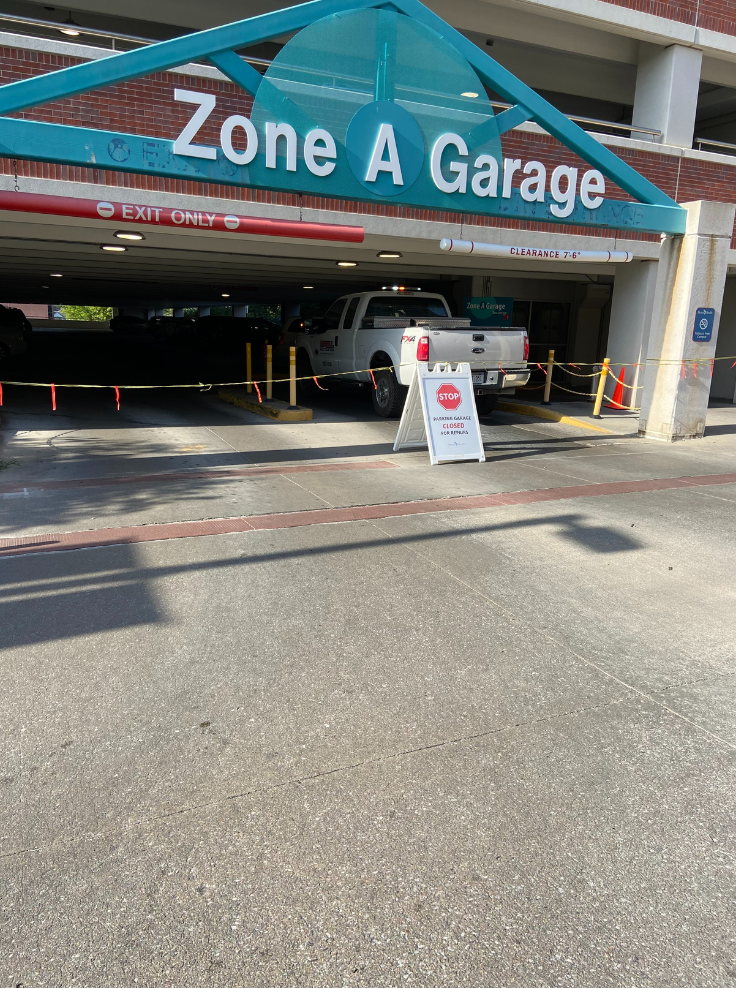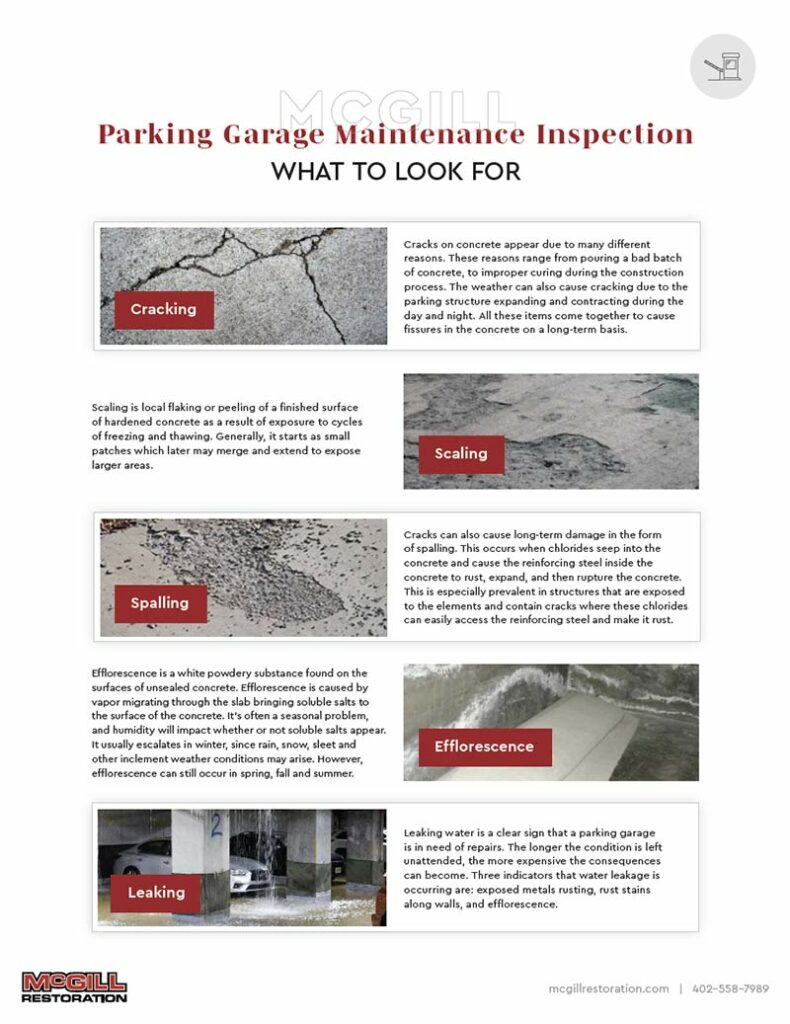Closing operational facilities for construction is costly for stakeholders and it presents challenges for customers, employees, and any associated users. On some jobs, especially those requiring hazardous chemicals or work on structural elements, closing is required. However, on many projects, we have designed a methodology that allows for facilities to remain fully or partially operational as we work through phased segments of the project.
Why Work on Open Facilities?
There are plenty of reasons to keep facilities like parking garages operational but three really stand out:
- Financial Loss – Structures that function on a pay-per-usage basis will incur direct revenue losses from full closures. In other cases, stakeholders will require an alternative parking lease to fulfill contractual obligations or they will implement shuttle services for off-site parking to continue offering customers convenient access to facilities.
- Operational Inconvenience – Employees will require off-site parking for closures, deliveries may see interruptions and the general inconvenience of having no parking can impact operations.
- Customer/User Satisfaction – All users will experience the inconvenience of closed structures and this can correlate to satisfaction levels. It’s for this exact reason that hospital systems lease off-site parking areas and implement valet services for patients. By remaining partially open throughout the construction process, key staff and users will still have access to convenient parking options.
Assessments and Initial Determinations
As mentioned, some facilities do require closures but a surprising number of projects are eligible to remain operational. When assessing a project we look at:
- Safety for users and construction crews – safety first!
- The scope of work
- Access for users
Safety and access are the major concerns, and we only work on projects that will not impact either of these elements. When it comes to industrial coatings, we only use VOC-compliant coatings (not harmful to bystanders) when working in operational facilities.
After making the determination, in conjunction with all stakeholders, a detailed plan is created to work on specific areas with phased sectional closures. This allows the facility to remain operational while only certain floors or segments are under construction.
Educating the Public and Directing Traffic
Although facilities are still in use, some changes in the direction of traffic and areas with temporary closures will create confusion. We go to great lengths to head off any issues by adding signage, temporary pavement markings, and even spotters to help direct the flow of traffic in busy areas.
While coatings are VOC compliant, they can emit a smell, and we work to educate the public about the processes and chemicals in use. In some cases, this even involves sharing spec and informational literature with neighbors and others frequenting the area.
Isolating Work Zones
When the work commences, isolating construction areas is imperative. We minimize visibility and impact by adding temporary walls and containment. Temporary walls contain materials and create safe/controlled work zones.
Dust control is also implemented to maintain clean air inside and outside of the work zone. Advanced air filtration machinery draws dust and air through vents and processes it through chambers before releasing to outdoor ventilation.
How Our Experience is Helping More Facilities Stay Open During Construction
Completing projects with exceptional quality and hitting tight deadlines is something McGill Restoration has been doing well for decades. Adding the element of operational facilities to projects is something our crews have learned to overcome and even master. As one of our estimator/project managers says, “We are willing to inconvenience ourselves more than the users. It’s important that we take every measure possible to maintain a safe work environment and a comfortable open facility for all traffic.” The Cheerio Apartments is a prime example of going the extra mile to minimize inconvenience to tenants.
It’s been a learning process and part of what makes us effective is a willingness to go above and beyond on projects. For example, we have worked on healthcare facility structures (read Bryan Medical Center case study) where sound might have a negative impact on surgical wings and other in-use areas. To compensate, we work nights and weekends when those facilities are not in use.
At a busy beef processing plant, closing down equates to seven figures in daily losses. We have an ongoing relationship with the facility because our team is willing to implement creative solutions so the entire plant can remain operational while we restore and repair segments of the structure.
It’s cases like these that make our team special. We are dedicated to achieving the best possible outcome while minimizing the inconvenience and financial impact of commercial restoration and construction projects.
Learn more about our work and contact us to discuss strategies to keep your facility safely open during restoration. Get in touch today.



